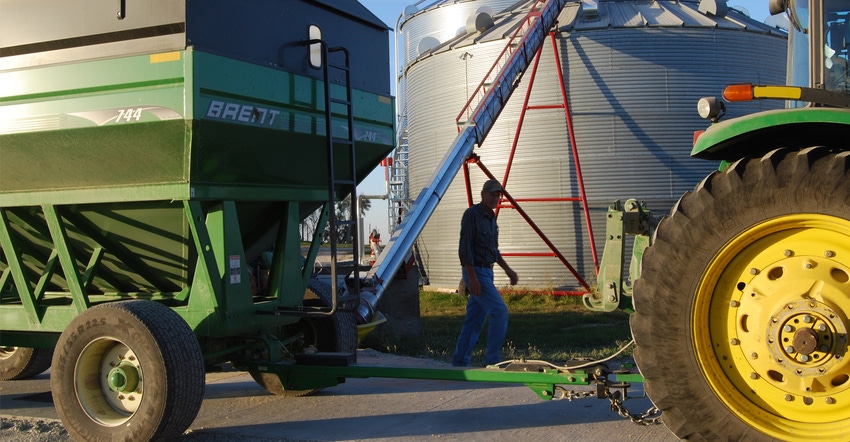September 28, 2017

Nearly every year, Iowa experiences at least one grain suffocation. And at least a dozen or more serious injuries involving farmers and their employees working around grain bins, augers, wagons, trucks, etc. So it should not be a surprise that one of the Farm Safety and Health Week messages this fall has a focus on grain safety. Remember, grain bin safety is no accident.
Be especially careful in bins, if you are working in the grain. “Most people don’t truly understand the tremendous force grain has unless they’ve experienced it,” warns Charles Schwab, farm safety specialist with Iowa State University Extension. “The misconception for most people is that they can easily be rescued once they are entrapped in flowing grain."
Force of grain greater than many realize
The reality of the situation is as a victim sinks deeper and the grain exerts more force, the magnitude of force holding the victim in the grain can easily exceed 2,000 pounds.
Even when the grain has stopped flowing, it’s difficult to help a submerged victim escape, says Schwab. Those with great upper body strength can't pull themselves out if they are buried to the chest. The force holding the submerged victim in the grain is too much. Trained first responders don’t pull victims out of flowing grain. They labor with great effort digging each one out as the hours tick by.
Ways to avoid being trapped
“Flowing grain suffocations are preventable, and that is why each one of these accidents is a tragic event,” Schwab says.
There are several ways to prevent flowing grain entrapment. Always lock all access doors to grain storage structures. Never allow anyone to play or ride on grain wagons or grain semitrucks. Lock out the electrical power to all types of grain-handling equipment when entering storage bins. Notify a second person of where you are at all times when loading or unloading grain.
Helping others understand the dangers associated with flowing grain and entrapment hazards that often lead to suffocations is the first step. Do your part by putting farm safety into practice this fall, by sharing your rules for handling the flowing grain hazard and seeing that everyone who works for you and with you follows those rules.
Source: Iowa State University
You May Also Like




